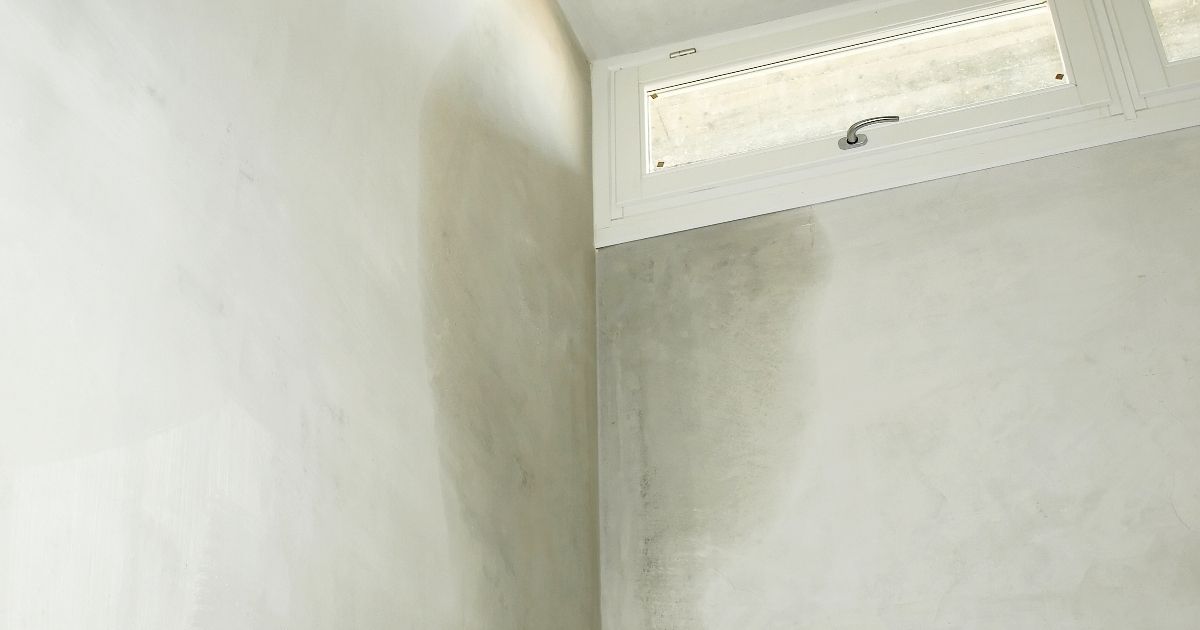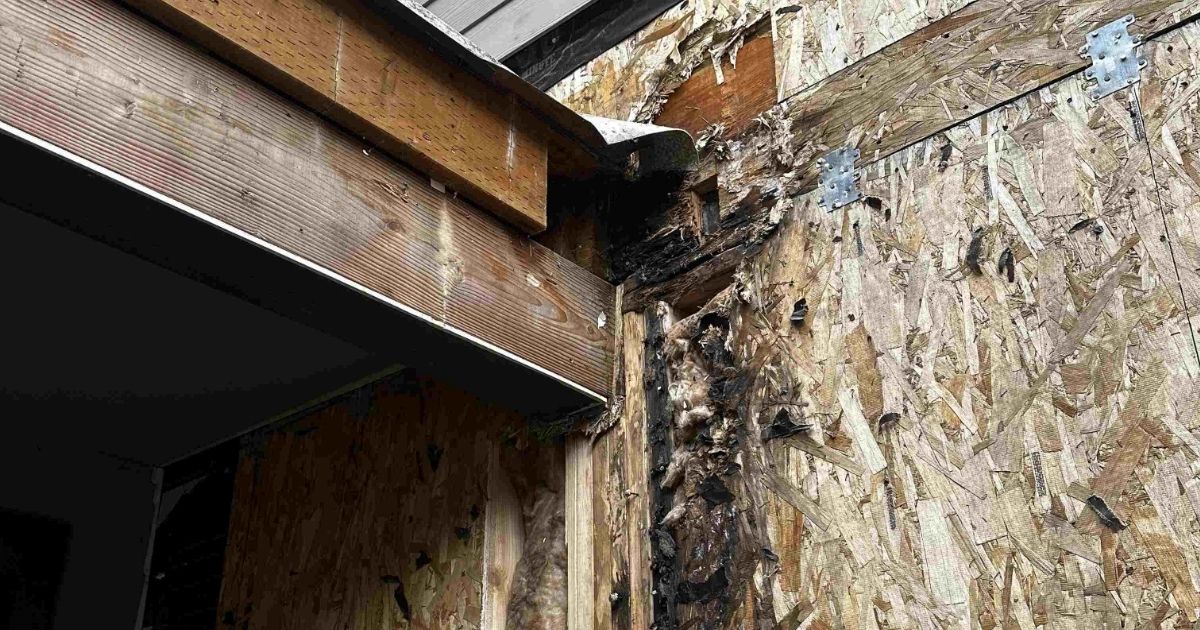What’s the Difference Between Dry Rot and Wet Rot?
If you've noticed soft, cracked, or discolored wood in your home, you're not alone. Many homeowners in Bellevue face wood rot issues caused by fungal decay but not all rot is the same. Knowing the difference between dry rot vs wet rot is the first step toward protecting your home from significant damage.
Both are caused by wood-destroying fungi, but they behave differently. One spreads fast and wide, even through brick and masonry. The other stays local but still weakens your wood and structure if left untreated.
Let’s break it down clearly, so you can spot the signs early and stop the damage before it spreads.
Dry Rot vs Wet Rot: A Quick Comparison
What Causes Dry Rot and Wet Rot in Bellevue Homes?
The Moisture Problem

At the heart of both dry and wet rot is moisture. In Bellevue’s damp, often rainy climate, it’s easy for moisture to build up especially in:
- Underfloor areas
- Basements
- Roof spaces
- Behind walls and around leaking pipes
- Poorly ventilated bathrooms and kitchens
Poor Ventilation and Hidden Leaks
Without enough airflow, trapped moisture creates the perfect breeding ground for rot fungi. Leaking pipes, penetrating damp, and roof damage are frequent culprits. Left untreated, they lead to fungal growth that slowly but surely eats away at your home's structural timber.
How to Identify Dry Rot vs Wet Rot
It’s not always easy to tell them apart but here’s how you can check.
Dry Rot Signs
- Brittle wood with deep cracks across the grain
- A musty, damp smell (similar to mushrooms)
- White, cottony or greyish fungal growth
- Fruiting bodies often rust-colored, with a lemon-yellowish tinge
- Affected areas may feel dry but crumbly
- May appear in areas with no visible leaks (dry rot spreads!)
Wet Rot Signs
- Wood feels soft, spongy, or crumbles when touched
- Localized decay, damage stays where the water is
- Dark brown or black discoloration
- Paint finish may bubble or peel
- Often found around leaking pipes, windowsills, or damp masonry
Why Dry Rot Is More Serious
While both types of rot are bad news, dry rot is often more destructive. It spreads beyond the original moisture source even traveling through masonry or plaster to find more timber. If you don’t catch it early, it can lead to:
- Major structural problems
- Damage to surrounding brick, walls, and flooring
- Higher repair costs due to the scope of spread
How to Prevent Dry Rot and Wet Rot in Bellevue Homes
Prevention is much easier (and cheaper) than full-scale repair. Here's how to stay ahead of the rot:
1. Control Moisture at Its Source
Whether it's wet rot or dry rot, the first and most crucial step is eliminating excess moisture. Check regularly for:
- Leaking roofs or gutters
- Faulty plumbing (especially in bathrooms, under sinks, near appliances)
- Condensation issues
- Blocked vents and poor airflow
Fixing these fast cuts off the fungi's fuel.
2. Keep Wood Dry and Ventilated
Fungi need moisture to thrive. Make sure your home stays dry with:
- Proper ventilation in crawl spaces and attics
- Use of dehumidifiers in damp-prone rooms
- Air bricks or ventilation grilles in underfloor areas
- Open windows when possible to improve airflow
3. Treat Timber Surfaces Proactively
Protect vulnerable wood with:
- Wood preservatives
- Waterproof sealants
- Paints that resist moisture penetration
Using a wood hardener can also restore strength to slightly affected areas.
4. Regular Home Inspections
Catch issues early by inspecting:
- Underfloor areas
- Window frames
- Roof cavities
- Bathrooms and kitchens
- Exterior siding and trim
Look for signs of moisture, discoloration, or fungus even in hidden areas.
How to Treat Dry Rot and Wet Rot (Step-by-Step)
For Wet Rot:
- Identify and fix the source of moisture
- Remove affected timber, especially any that feels soft or crumbly
- Treat surrounding wood with fungicide
- Ensure the area is well-ventilated and dry
- Replace timber with treated wood
Wet rot often stops spreading once the moisture is gone but repairs are still necessary to restore strength.
For Dry Rot:
- Locate and remove the source of moisture
- Strip out all affected timber, even areas that seem fine (rot may have spread)
- Remove and sterilize surrounding brickwork, plaster, or masonry
- Apply fungicidal treatment to the entire area
- Use new, treated timber for replacements
- Improve ventilation to avoid future outbreaks
Because dry rot spreads aggressively, it’s best to bring in a specialist for assessment and treatment.
Why You Shouldn’t Delay Treatment
Leaving either form of rot untreated invites serious and expensive problems:
- Structural damage to floors, walls, and roofs
- Increased mold and health risks
- Costly timber replacement and re-plastering
- Damage to insulation, electrical systems, and masonry
If you’re seeing musty smells, warping, or crumbling timber, don’t wait.
When to Call a Dry Rot or Wet Rot Specialist in Bellevue
Sometimes, the issue goes beyond DIY.
Call in a pro if:
- You can’t locate the source of moisture
- The rot covers large or multiple areas
- You see signs of dry rot fungus spreading across walls
- You’re unsure whether it’s wet or dry rot
- The damage is near structural beams or supports
A qualified contractor will perform a rot survey, pinpoint the issue, and outline the safest way to treat and repair your home.
Real Case: Newcastle Cedar Deck Restoration with Hidden Dry Rot

We recently worked on a cedar deck restoration project in Newcastle, just a short drive from Bellevue. What started as a routine deck facelift quickly turned into a deeper structural issue — hidden dry rot beneath the surface.
At first glance, the deck looked weathered but solid. However, as we began removing boards, we uncovered signs of moisture intrusion that had allowed dry rot fungus to spread through the support joists and ledger board attached to the home.
Here’s what we found (and fixed):
- Extensive rot damage on the ledger board and adjacent structural supports
- Dry rot spread into the framing beneath the surface, invisible until demo
- Replaced affected wood with pressure-treated and sealed cedar
- Applied preventative fungicide treatment
- Added flashing and improved drainage to prevent future moisture problems
The result? A beautifully restored cedar deck that’s safer, longer-lasting, and protected from future fungal decay. It’s a perfect example of why dry rot can’t be ignored, it often lurks out of sight, even in places you use every day.
View the full project here → Cedar Deck Restoration in Newcastle
Dry Rot vs Wet Rot: Key Takeaways
- Dry rot spreads aggressively, even through walls and bricks, needs professional treatment
- Wet rot stays local, often treatable if caught early
- Both are caused by moisture, prevention starts with managing leaks and improving ventilation
- Act early to avoid costly repairs
Need Help With Dry or Wet Rot in Bellevue?
At Rot Doctor, we specialize in identifying, treating, and preventing both dry rot and wet rot issues in Bellevue homes. From leak detection to fungal treatment and structural repairs, we help you protect your property for the long haul.
Get a Free Moisture Inspection Today → Schedule Now
Questions or Concerns?
Feel free to reach out, we’re happy to offer advice, inspections, and solutions. It’s your home, let’s keep it safe and dry.
Frequently Asked Questions (FAQs)
1. What is the difference between wet rot and dry rot?
Wet rot and dry rot are both types of fungal decay in wood, but they differ in cause, moisture needs, and severity.
- Wet rot is caused by several fungi and only occurs in areas with consistent high moisture (30–60%). It stays localized and usually affects timber near leaks or damp environments.
- Dry rot, caused by Serpula lacrymans, is the most destructive form. It can grow even in wood with lower moisture content (as little as 20%) and spreads beyond damp areas, traveling through masonry, brick, and air pockets in the home.
In short: Wet rot stays put and needs water. Dry rot spreads fast and causes more damage.
2. How do you tell the difference between dry rot and termite damage?
While both dry rot and termite damage compromise wood structures, their signs and causes are very different:
- Dry rot is caused by fungal growth, not insects. Look for:
- Musty smell, fruiting body, and deep wood cracks
- Wood that feels soft and spongy or shows cuboidal cracking
- Signs of fungus on surrounding walls, masonry, or plaster
- Termite damage involves live pests. Look for:
- Mud tubes, sawdust-like frass, or hollow-sounding timber
- Small holes in wood surfaces
- Visible termite tunnels inside wood
If you're unsure, call a professional to accurately diagnose the problem. Treating the wrong cause can lead to more structural damage over time.
3. What is dry rot and how do you fix it?
Dry rot is a type of fungal decay caused by the organism Serpula lacrymans. It destroys wood from the inside out, even in areas with minimal moisture, and can lead to serious structural damage if left untreated.
To fix dry rot:
- Locate and eliminate the moisture source — leaking pipes, poor ventilation, or rising damp.
- Remove and replace all affected timber — including hidden framing behind visible damage.
- Sterilize the surrounding area — brick, plaster, and adjacent wood may harbor spores.
- Apply a fungicidal treatment to prevent recurrence.
- Improve ventilation and drainage to keep the area dry long-term.
Pro tip: Dry rot can spread quickly, even into masonry, so early detection and professional treatment are key.
4. How to identify dry rot in wood?
Spotting early signs of dry rot can help you avoid major repairs. Here’s what to look for:
- Musty, damp smell like mushrooms or mold
- Wood feels soft, brittle, or crumbly when touched
- Deep cracks running across the grain in a cuboidal pattern
- A white or grey cotton wool-like fungus or rust-colored spore dust
- Visible fruiting bodies that look like a lemon-yellowish pancake or mushroom
- Distorted paint finishes or bubbling plaster on nearby walls
Dry rot often begins in underfloor areas, crawl spaces, or near leaking plumbing. If you suspect it, act quickly, dry rot spreads fast and can compromise the integrity of your home.

.png)



.svg%20fill.svg)












